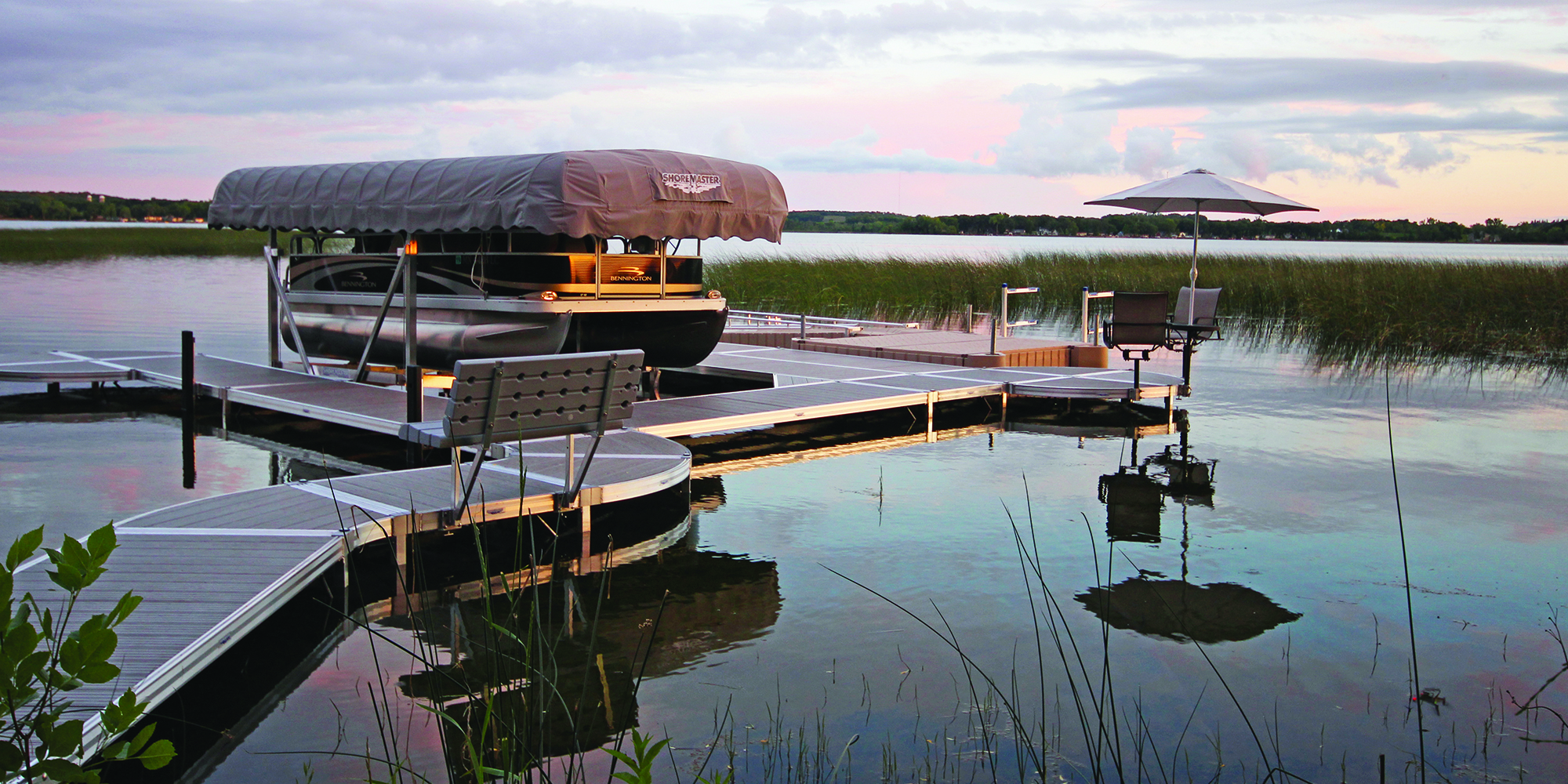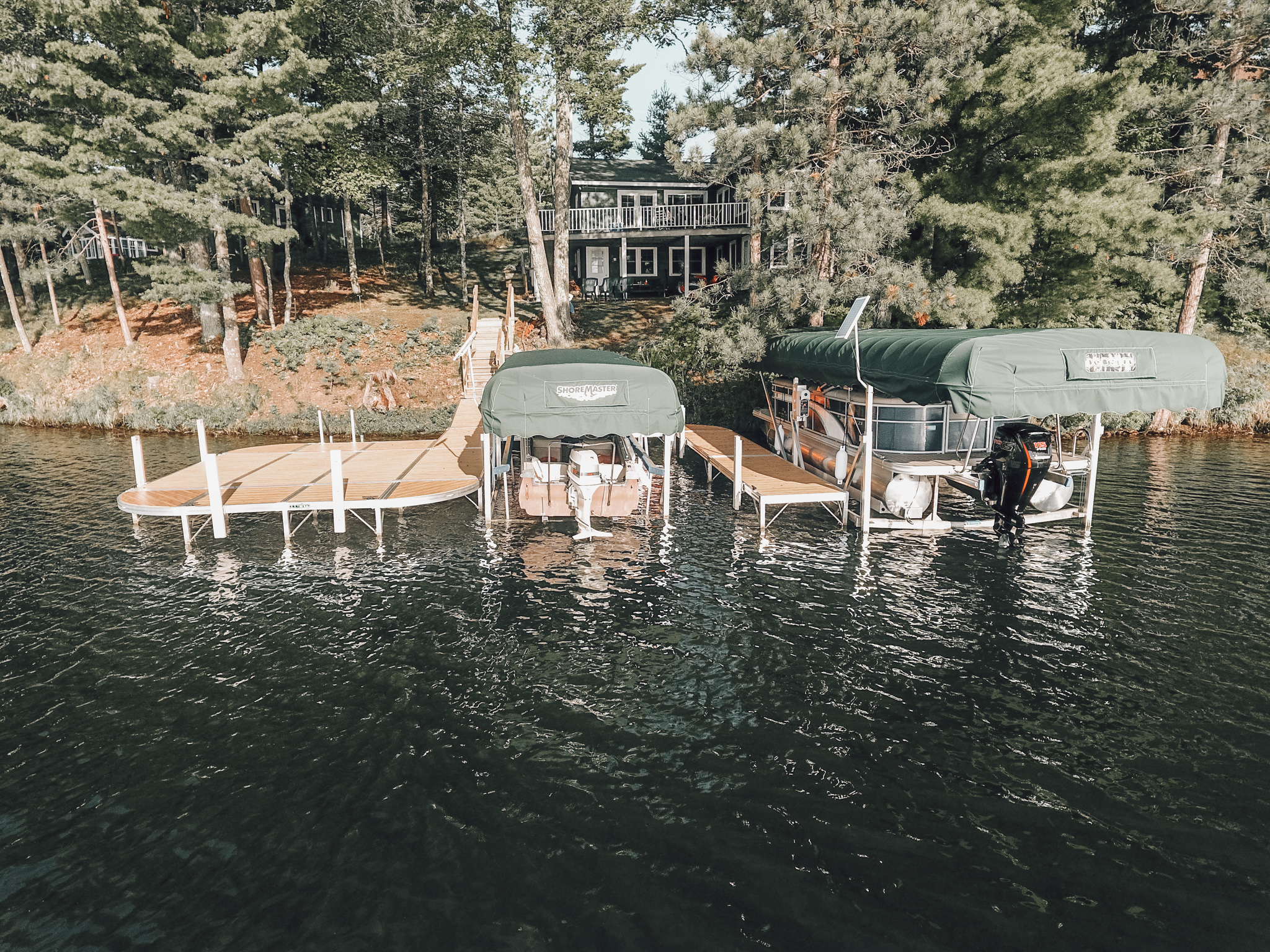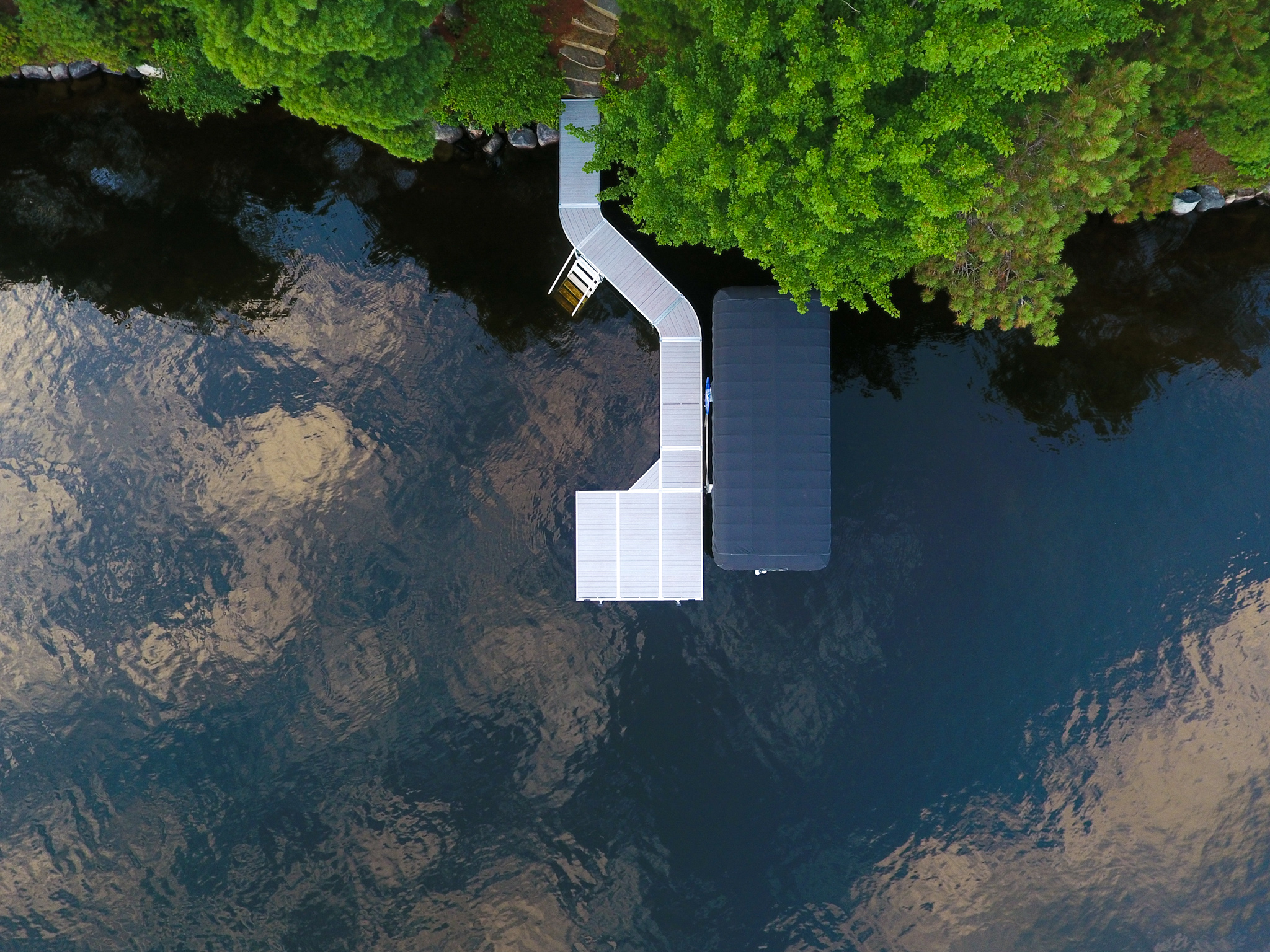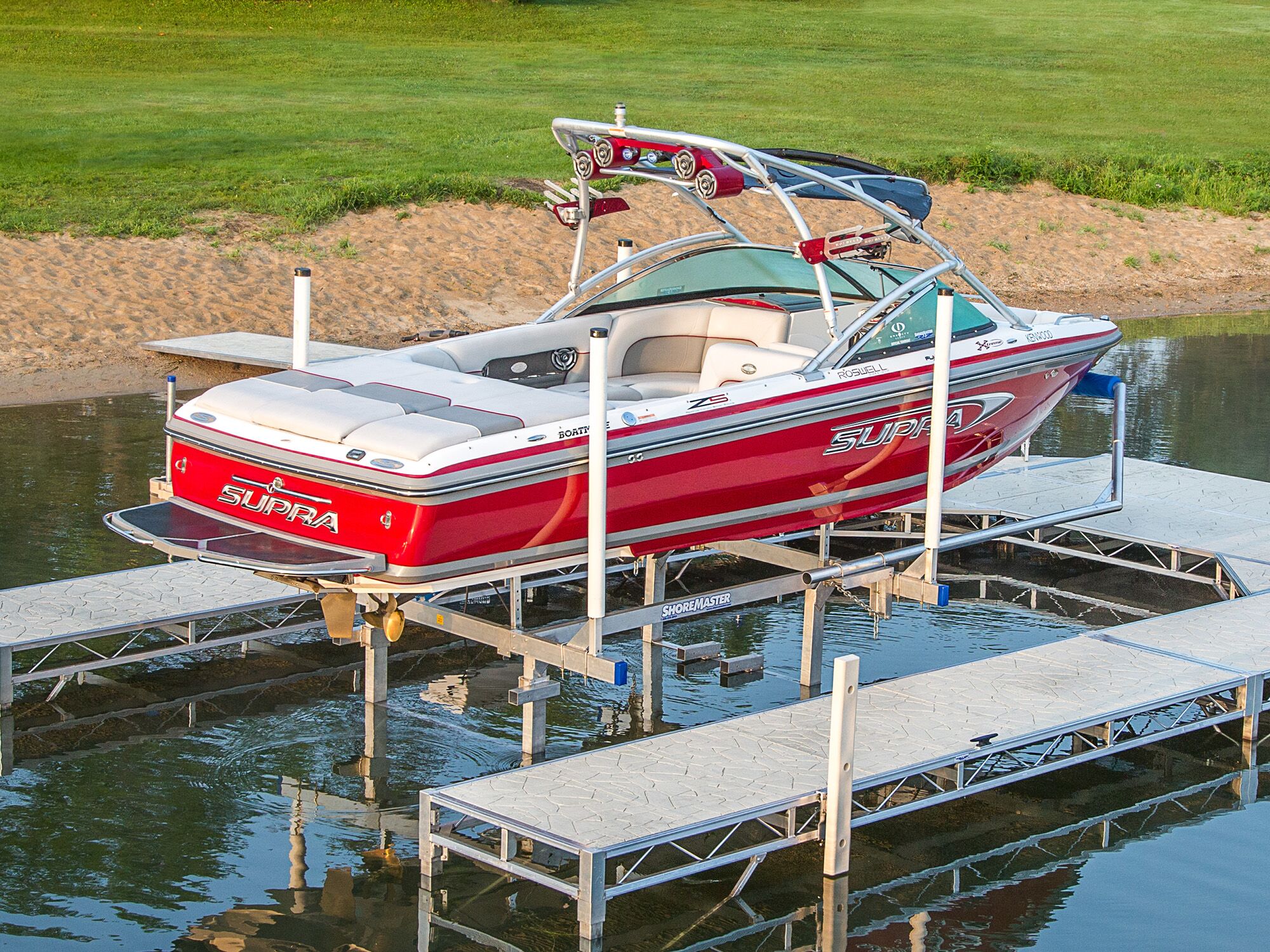December 28, 2023
Boat Dock Safety Comprehensive Guide: Tips and Best Practices
Written by ShoreMaster Marketing
How to Enhance Safety on Boat Dock
Apart from being a waterfront extension of home, boat docks serve as a launchpad for many outdoor adventures. However, they can also be a petri dish of potential hazards without the necessary precautions. Below, we discuss the primary boat dock safety considerations you should take to leave danger out of the equation while indulging in fun and leisure.

How do I properly maintain and repair my boat dock to ensure safety?
Below are the essential maintenance tasks to keep your boat dock safe and reliable:
-
Regular Cleaning and Inspection
Thoroughly cleaning your boat dock at least twice a year removes debris, algae, and stains, preventing these elements from weakening dock materials and causing damage. Use mild soap and a soft brush to wash the decking. We suggest using a hose, but if you plan on using a pressure washer, use its lowest setting to avoid damaging the surface.
During cleaning, inspect your dock for any signs of wear and tear, such as:
- Rotting wood
- Loose boards, railings, or connections
- Rusting metal components
- Cracks or splits in the surface
- Worn-out bumpers and rub rails
If you notice any of the above, address them immediately to prevent the issue from escalating into costly repairs.
2. Maintaining Different Dock Materials
Different dock materials involve specific maintenance needs. While we suggest consulting the owner’s manual, here are some general guidelines:
Wooden Docks:
- Sand and stain the wood every few years to protect it from the elements and avoid splinters.
- Apply a sealant for additional protection.
- Regularly check for rotting boards and replace them accordingly. Even adults can trip on loose or rotting boards.
Aluminum Docks:
- Clean with mild soap and water.
- Remove rust with commercial rust removers or natural solutions like vinegar.
- Apply protective coating to prevent future rusting.
Plastic Docks:
- Wash with mild soap and water.
- Use a non-abrasive cleaner to avoid scratching the surface.
- Inspect for cracks or warping and repair or replace as needed.
Additionally, inspect steel parts and sand, prime, and paint them where applicable.
If you want to upgrade, our floating docks combine performance and stability with superior ease of ownership. Contact one of our local dealers today to learn more about one of the best docking solutions on the market.
3. Maintaining Dock Lines
Regular inspection of cords and dock lines must also be a part of your maintenance routine. Check for signs of fraying, wear, or damage and replace them immediately if the integrity appears compromised. Doing so prevents your boat from spontaneously unhitching and drifting away.
Finally, remember to keep ropes and cords clear of walking areas when not in use.
4. Winterizing Your Dock
If you live in an area with harsher winter conditions, performing the following winterizing tasks is crucial to extending the lifespan of your boat dock:
- Remove all dock lines, cleats, and other exposed accessories.
- If possible, lower the dock into the water to prevent ice damage.
- Cover the boat dock with a weighted tarp to protect it from snow and wind.
If you’re using one of ShoreMaster’s boat docks, contact your local dealer for more information and tips on proper boat dock maintenance.
Are life jackets necessary for boat dock safety?
While docks may seem like stable platforms, falls can happen unexpectedly. In such cases, having readily available life jackets can be critical. Even for stronger swimmers, unexpected events like slippery surfaces and sudden water depth and current fluctuations can result in precarious situations.
In addition to life jackets, it’s best to equip your boat dock with the following boat dock safety equipment:
- First aid kit
- Fire extinguisher
- Throw rope/life rings
- Non-slip mats
- Dock lighting
Having essential safety equipment readily available and following a boat dock safety guide creates a safer environment for your friends and family, allowing them to focus on enjoying their time on the water.
What other safety tips should I be aware of?
Here are a few other tips to enhance boat dock safety:
-
Install Ground Fault Circuit Interrupters (GFCIs)
GFCIs are vital safety devices for any dock with electrical outlets, lights, and other electrical equipment. They can detect even the slightest imbalances in electrical current, immediately shutting off power to prevent shocks. As such, installing GFCIs is critical to ensuring boat dock electrical safety.
Here are some pivotal GFCI installation considerations:
- Location: All outlets on the dock should be GFCI-protected.
- Weatherproofing: Use GFCIs specifically designed for outdoor use to withstand harsh weather conditions.
- Testing: Regularly test your GFCIs to ensure they’re functioning properly.
Additionally, make a habit out of checking electrical wirings and connections. Look for signs of damage, fraying, or exposed wires. Avoid using extension cords and maintain a safe distance from overhead power lines when docking or operating your boat.
2. Install Barriers and Gates
Restricting access to the water’s edge, especially for young children, prevents accidental falls. Consider installing these safety barriers:
- Handrails: Sturdy dock railing systems running along the dock’s edge offer support and stability for dock users.
- Gates: Installing gates at the dock entrance can effectively restrict children’s access to the water.
- Fencing: Surrounding the dock with fencing adds another layer of protection and discourages unauthorized access.
Check out our accessories catalog to find a quality safety gate for your boat dock, and contact your local dealer to learn more about dock accessories for enhancing boat dock safety.
Where to buy boat dock safety rails near me?
As the leading manufacturer of innovative docking solutions, ShoreMaster boasts a network of authorized dealers across the US and Canada. These retailers offer a wide selection of boat dock safety rails, including:
- Aluminum Handrails: These are durable and weather-resistant, offering a secure grip for dock users.
- Vinyl-Coated Handrails: These provide the same grip and safety as aluminum handrails but with a softer feel and added protection against rust and corrosion.
- Cable Railings: These offer a stylish and contemporary look while still providing excellent safety.
- ADA-compliant Handrails: These feature specific design elements to ensure accessibility for persons with disabilities.
Our knowledgeable team can provide more information on boat dock safety requirements. To find a ShoreMaster dealer near you, visit our website and use the dealer locator tool.



